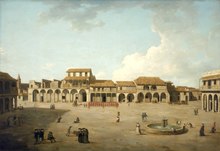Contents
Other years |
| Countries of the United Kingdom |
| Scotland |
| Sport |
| 1762 English cricket season |
Events from the year 1762 in Great Britain.
Other years |
| Countries of the United Kingdom |
| Scotland |
| Sport |
| 1762 English cricket season |
Events from the year 1762 in Great Britain.


